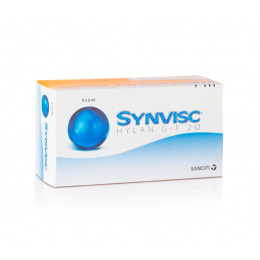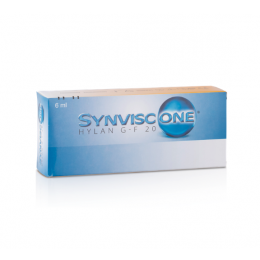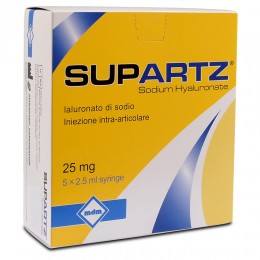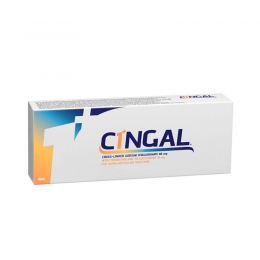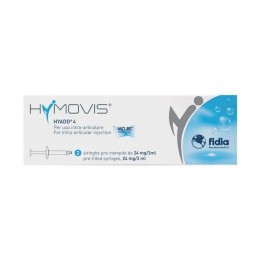Login Form
Registration
Profile Informations
Login Datas
or login
Orthopedics
Orthopedics is the branch of medicine focused on diagnosing, treating, and managing conditions that affect the musculoskeletal system. This includes bones, joints, ligaments, muscles, tendons, and nerves. Whether caused by injury, disease, or the wear of aging, orthopedic conditions can significantly affect a person's movement and comfort.
Modern orthopedic care combines preventive strategies, minimally invasive treatments, physical rehabilitation, and—when needed—surgical interventions to restore function and improve quality of life.
Buy Orthopedic Products Wholesale at Activa Derma — Safe and Reliable
Buying orthopedic supplies or products at Activa Derma ensures authenticity and quality. You can confidently buy orthopedic products online wholesale through our trusted platform. We specialize in supplying healthcare providers with high-quality orthopedic solutions at competitive wholesale prices. Whether you need orthopedic injections, supportive devices, or surgical aids, buying at Activa Derma offers secure ordering, verified sourcing, and timely delivery to your practice.
What Does Orthopedic Care Involve?
Orthopedic care addresses both acute injuries and chronic disorders. It includes a wide range of treatments, from conservative therapies like physical rehabilitation and injections to surgical procedures such as joint replacements.
Common conditions treated by orthopedic specialists:
-
Osteoarthritis
-
Rheumatoid arthritis
-
Tendonitis and bursitis
-
Bone fractures and dislocations
-
Joint pain and stiffness (especially in knees, hips, shoulders, and ankles)
-
Carpal tunnel syndrome
-
Herniated discs and spine conditions
-
Ligament and meniscus tears
Treatment aims to relieve pain, restore mobility, and prevent further injury or degeneration.
Orthopedic Injections: A Non-Surgical Approach
Orthopedic injections are commonly used to reduce pain and inflammation or to enhance joint lubrication. These treatments are often recommended before considering surgery, especially for conditions like osteoarthritis.
What Are Orthopedic Injections?
Orthopedic injections involve delivering medication directly into the affected joint or soft tissue. This targeted approach can help relieve symptoms more efficiently than oral medications.
Types of injections
-
Viscosupplementation (Hyaluronic Acid): These injections use substances like sodium hyaluronate to help lubricate joints, especially in the knees. They are commonly used for patients with mild to moderate osteoarthritis.
-
Corticosteroids: Steroid injections provide strong anti-inflammatory relief. They are often used to manage acute flare-ups of arthritis or other inflammatory conditions.
-
Platelet-rich plasma (PRP): This uses the patient's own blood components to promote healing in tendons, ligaments, and joints.
-
Local Anesthetics: Sometimes combined with other injections to offer immediate pain relief.
Treatment Areas
Orthopedic injections and therapies are not limited to just one body part. They are frequently used in several joints and soft tissue regions.
Common application sites:
-
Knees – For treating osteoarthritis and meniscus injuries
-
Hips – For degenerative conditions and bursitis
-
Shoulders – For rotator cuff injuries and frozen shoulder
-
Ankles – For arthritis and ligament issues
-
Hands and Wrists – For rheumatoid arthritis and tendonitis
-
Toes and Feet – For localized joint pain or inflammation
How Are Injections Administered?
Administering an orthopedic injection requires precision and expertise. In many cases, ultrasound guidance is used to ensure accuracy. Here's what a typical session involves:
-
The patient is positioned for comfort and joint accessibility.
-
The area is disinfected with alcohol or iodine.
-
A local anesthetic may be applied to reduce discomfort.
-
Injections are administered with or without ultrasound guidance.
-
After injection, the joint may be gently moved to help distribute the solution evenly.
The process usually takes less than 10 minutes. Some patients feel mild discomfort during the injection, but this typically subsides quickly.
Frequency of Orthopedic Injections
The number and timing of injections depend on the condition and the product used.
-
Some injections require a single application.
-
Others are administered as a series of 3 to 5 injections over several weeks.
-
The effects of treatment generally last for up to 6 months, though some formulations like Crespine Plus may provide relief for up to 8 months.
Your healthcare provider will recommend a schedule that aligns with your symptoms, goals, and medical history.
Additional Non-Surgical Treatments
In many cases, orthopedic injections are part of a broader treatment plan. Conservative options can support healing, reduce discomfort, and delay or even eliminate the need for surgery.
Supportive therapies:
-
Physical Therapy: Tailored exercises improve strength and flexibility, reducing strain on the affected joint.
-
Oral Medications: Pain relievers and anti-inflammatory drugs may be prescribed to manage symptoms between treatments.
-
Hot and Cold Packs: Ice reduces inflammation, while heat promotes circulation and eases muscle stiffness.
-
Assistive Devices: Braces, canes, or orthotic shoe inserts can help support joints and reduce pressure.
-
Lifestyle Adjustments: Reducing high-impact activity, avoiding heavy lifting, and maintaining a healthy weight can protect joints and slow degeneration.
Surgical Options in Orthopedics
When conservative treatments no longer provide relief, surgical intervention may be recommended. Surgical options vary depending on the location and severity of the issue.
Types of Orthopedic Surgery
-
Arthroscopy: Minimally invasive surgery used to diagnose and repair joint problems.
-
Partial or Total Joint Replacement: Replacing damaged cartilage and bone with prosthetic components, commonly performed on knees, hips, and shoulders.
-
Ligament Reconstruction: Common in sports injuries, such as ACL reconstruction.
-
Spine Surgery: Includes procedures like discectomy, laminectomy, and spinal fusion for chronic back pain or nerve compression.
Surgery is typically considered when other treatments fail to relieve symptoms or when structural damage requires correction.
Who Should Seek Orthopedic Care?
Orthopedic care is suitable for people of all ages, from children with sports injuries to older adults managing age-related joint degeneration. You may benefit from seeing an orthopedic specialist if you experience:
-
Persistent joint or muscle pain
-
Limited range of motion
-
Swelling that doesn't improve with rest
-
Stiffness or instability in the joint
-
Recurrent injuries or physical strain from work or sport
Early evaluation and treatment can help prevent long-term damage and restore function faster.
Safety and Side Effects
Orthopedic treatments, especially injections, are generally safe when performed by qualified professionals. However, as with any medical intervention, there are risks.
Possible side effects:
-
Mild swelling or redness at the injection site
-
Temporary increase in pain after the procedure
-
Bruising
-
Infection (rare)
-
Allergic reaction to the injected substance (very rare)
Most side effects are short-lived and resolve on their own. Patients are advised to rest the treated area for a day or two and follow any post-treatment instructions provided by their healthcare provider.
The Role of Early Intervention
Delaying treatment for musculoskeletal issues can lead to more serious problems. Chronic inflammation or untreated injury may result in joint deformity, loss of mobility, or long-term nerve damage. Acting early increases the chances of effective management through non-invasive or minimally invasive treatments.
What to Expect During Your First Visit
When visiting an orthopedic specialist, the process usually begins with:
-
A full medical history review and discussion of symptoms
-
A physical examination
-
Diagnostic tests (e.g., X-rays, MRI, or ultrasound) if needed
-
A personalized treatment plan based on your diagnosis and lifestyle
Patients are encouraged to ask questions and fully understand their options before deciding on any course of treatment.
Why Buy Orthopedic Supplies Online at Activa Derma?
For healthcare providers and clinics looking to buy orthopedic products online, Activa Derma offers a trusted wholesale platform. We supply high-quality orthopedic materials, injection kits, and support devices with verified authenticity and competitive pricing.
Is it absolutely safe to buy orthopedic products online when you purchase from licensed wholesalers like Activa Derma. We maintain strict storage and shipping standards to ensure product integrity. Buying from reputable sources protects your practice from counterfeit or substandard items and guarantees patient safety.
Our wholesale program offers:
-
Volume discounts for bulk orders
-
Easy online ordering and secure payment options
-
Fast and reliable delivery worldwide
-
Dedicated customer support for product guidance and inquiries
Choose Activa Derma when you need to buy orthopedic products online, so you can focus on providing the best care without worrying about supply chain risks.
Summing Up
Orthopedics plays an important role in treating injuries and conditions that affect the way we move. Whether you're dealing with chronic joint pain, a sports injury, or early signs of arthritis, orthopedic care offers a wide range of solutions tailored to your needs.
From conservative treatments like injections and physiotherapy to surgical procedures when necessary, orthopedic specialists work to restore function and help patients return to daily activities with less pain and greater mobility.

